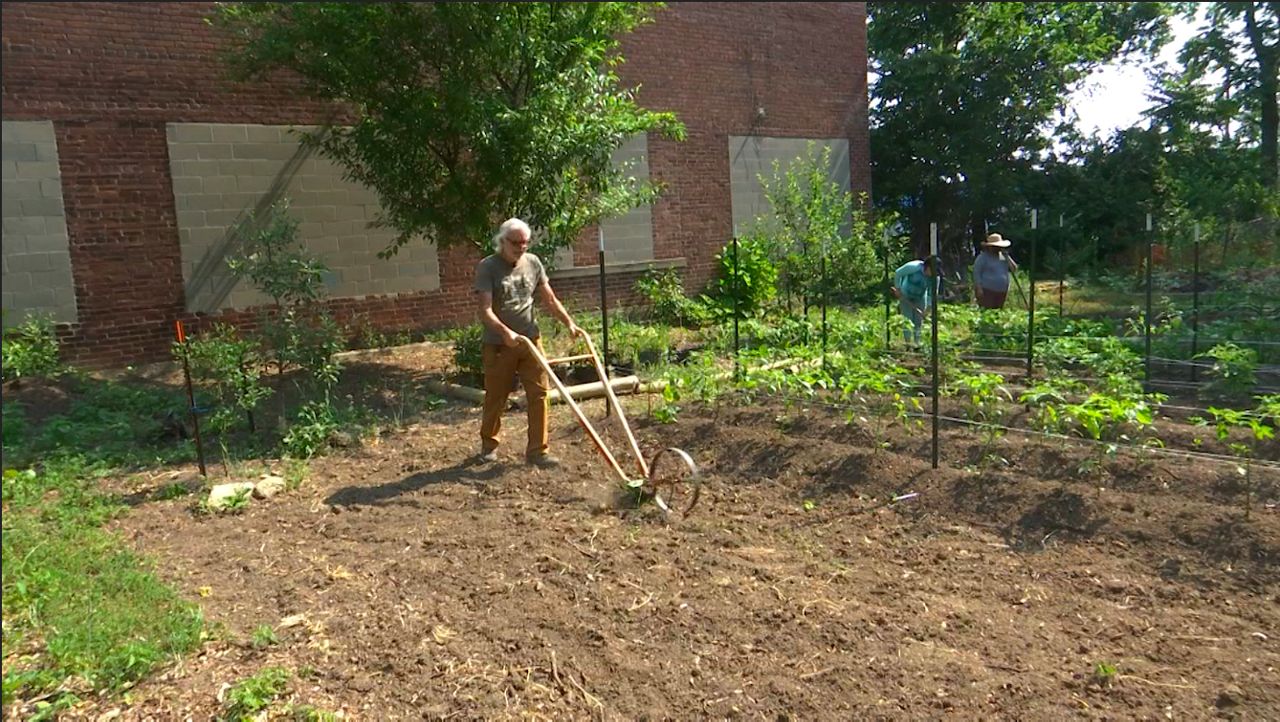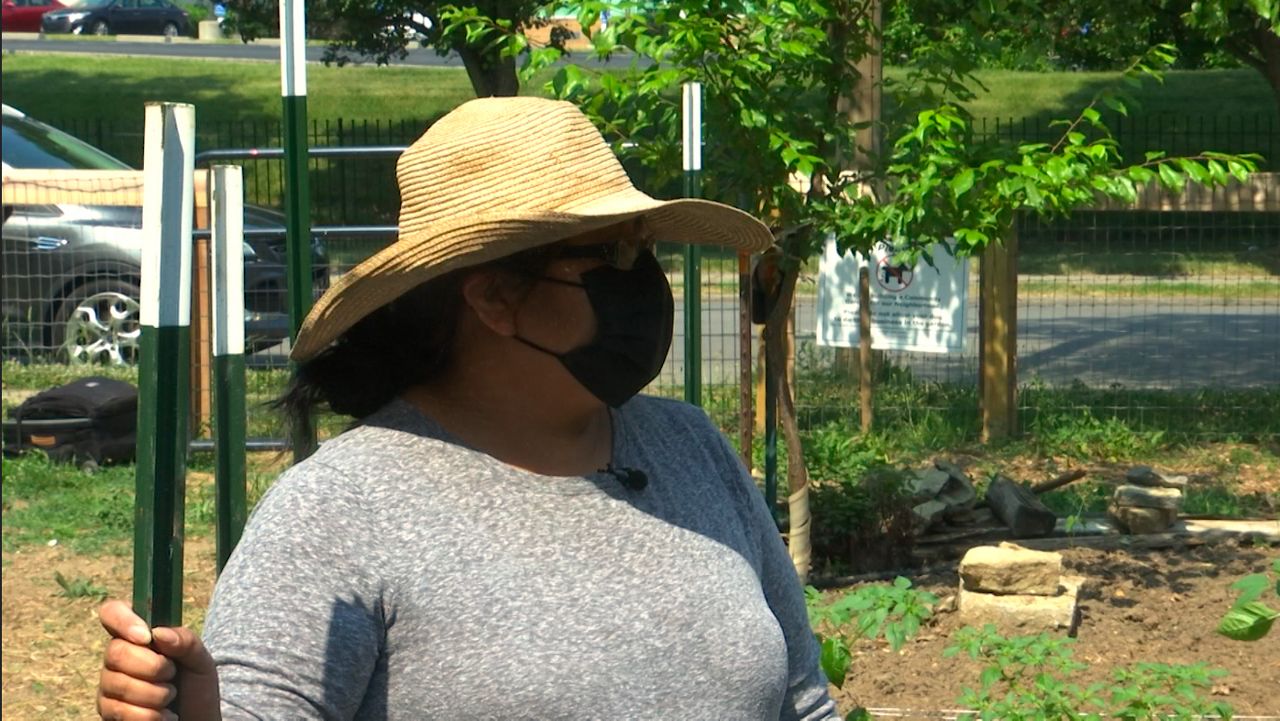CINCINNATI — With its rows and rows of leafy greens, trellising tomatoes, and budding peppers, the small community garden off of Price Hill’s Beech Avenue has come to life.
It’s thanks to the efforts of three nonprofits providing the funds, land and resources, but it’s the hard work and engagement of local volunteers that have organizers optimistic this garden will stand the test of time.
The Beech Avenue garden has been a Price Hill Will project since 2016, with a former incarnation of the garden providing raised-bed plots for produce until volunteers and dedication dropped off and the emptying lot overgrew.
Still, Jim Tuttle, the residential real estate director with Price Hill Will, wanted to see the land put to good use, so he reached out to two other area nonprofits to see what they could do, while he applied to a grant to get some of the funds to revive the project through Cincinnati’s Urban Agriculture Program.

Peter Huttinger, with the Turner Farms Community Garden Program, hopped on to help get the new version of the garden set up and provide education on best practices. Santa Maria Community Services connected with locals to find a group of dedicated volunteers.
Alejandra Garcia and her sisters stepped forward to help lead the way, giving the garden its new name “Tres Hermanas.”
“There was nothing in here, just big grass and weeds and we cleaned it up,” she said.
Huttinger’s let them lead the way when it came to what they grew, but it was his idea to switch from individualized raised beds to planting in rows.
“That’s the most productive way to grow crops in terms of your yield. It’s also a very streamlined way to take care of your crops,” he said. “It targets the water needs to the plants and so there’s very little waste and reduced labor.”
He’s also working to install an irrigation system to make watering the plants even easier and invested in equipment that would last multiple harvests.

“We use metal tee posts instead of wood because once you buy this tee post, you could probably give it to your grandchildren,” he said. “They can be moved to different plots and reused over and over.”
Besides localized techniques and adapting planting and harvest schedules to Ohio’s climate, Hettinger said most of the volunteers came with their own knowledge. Many are immigrants who did subsistence gardening in their former homes.
“A lot of it is just getting out of the way and letting them do their thing,” he said.
Garcia and her fellow volunteers have been working on the garden for a little over a year, doubling its size and harvest. The garden itself has become a community gathering site, and the food goes to gardeners to help feed themselves and their neighbors.
“Because this is the place where we have our own vegetables for us and for the people,” Garcia said.
Now, with more sustainable practices, a multigenerational group of volunteers, and outside support, Tuttle is hopeful the garden will continue to grow into its second life, serving the community in more ways than one.
“Any time we can get a vacant lot going and transformed into something beautiful for everybody is a win-win,” he said.



